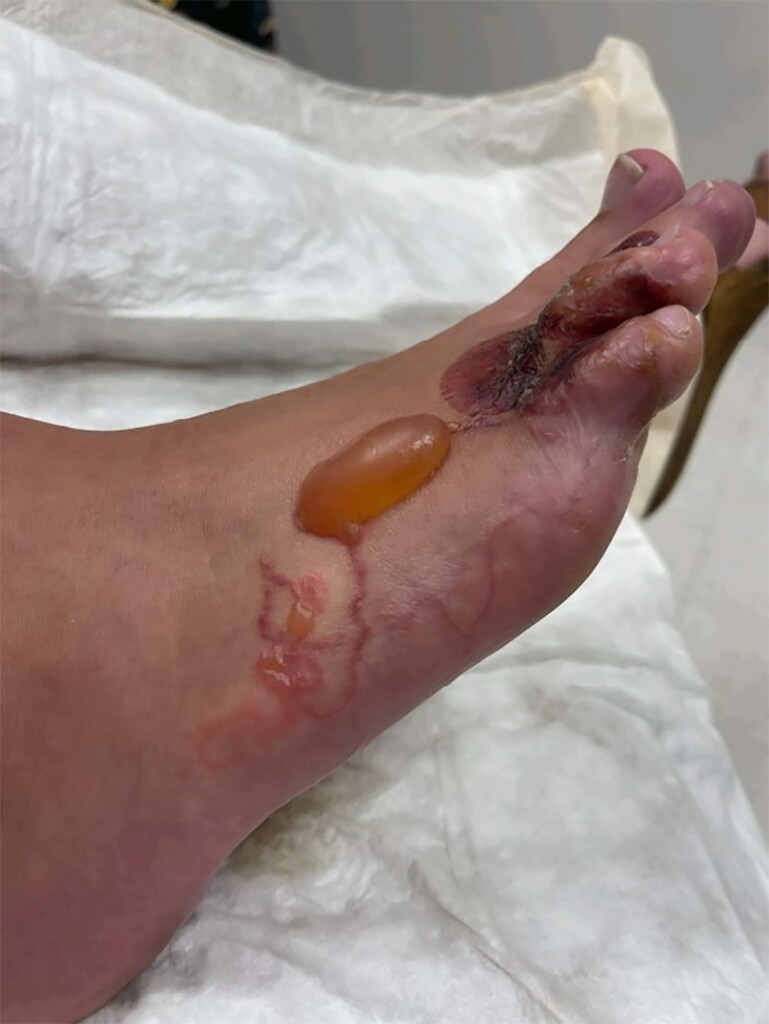Cutaneous larva Migrans (CLM) is a parasitic skin disease caused by the penetration of hookworm larvae into the epidermis. These larvae, unable to complete their lifecycle in humans, migrate within the skin, resulting in serpiginous, pruritic lesions. CLM primarily affects individuals in tropical and subtropical regions, particularly those with exposure to contaminated soil or sand.

Causes and Transmission
The condition is caused by larvae of animal hookworms, predominantly Ancylostoma braziliense and Ancylostoma caninum, which are commonly found in dogs and cats. Transmission occurs through direct skin contact with contaminated soil or sand, often in beaches, farms, or areas with poor sanitation.
Risk Factors
- Walking barefoot on contaminated surfaces
- Sitting or lying on infested ground
- Traveling to endemic regions
- Occupational exposure (e.g., farmers, gardeners, construction workers)
- Poor hygiene and inadequate sanitation
Symptoms and Clinical Presentation
Symptoms typically appear within a few days after exposure and progress as follows:
- Pruritic erythematous papules at the site of penetration
- Serpiginous or linear tracks representing the migration of larvae
- Severe itching and irritation
- Inflammation and secondary bacterial infection in prolonged cases
- Localized swelling and pain in some individuals
Progression of Lesions
The larvae move at a rate of 1-2 cm per day, causing new tracks to appear as old ones fade. Common sites of infection include the feet, buttocks, hands, and thighs.
graph TD;
A[Exposure to Contaminated Soil] --> B[Hookworm Larvae Penetrate Skin];
B --> C[Larvae Migrate Within Epidermis];
C --> D[Serpiginous Lesions Develop];
D --> E[Symptoms: Itching, Redness, Inflammation];
E --> F[Possible Secondary Infections];Diagnosis
Diagnosis is primarily clinical, based on characteristic skin lesions and patient history of exposure. Diagnostic methods include:
- Physical examination: Observation of creeping eruption
- Dermoscopy: Magnification of larvae movement
- Skin biopsy (rarely needed): Confirms parasite presence
- Eosinophil count (optional): May show mild eosinophilia
Treatment and Management
Although CLM is self-limiting, resolving in 4-8 weeks, treatment accelerates recovery and alleviates symptoms.
Pharmacological Treatment
- Albendazole (400 mg daily for 3-7 days): Most effective antiparasitic
- Ivermectin (200 mcg/kg single dose or daily for 2 days): Alternative treatment
- Topical thiabendazole (10-15%): Useful for localized lesions
- Antihistamines: Relieve itching and discomfort
Supportive and Symptomatic Care
- Cold compresses to reduce itching
- Hydrocortisone cream for inflammation
- Antibiotics for secondary bacterial infections
- Avoid scratching to prevent complications
Prevention Strategies
To minimize the risk of CLM:
- Wear shoes and protective clothing in endemic areas
- Use mats or towels when sitting on sand or soil
- Maintain proper sanitation and pet deworming
- Educate travelers on preventive measures